“If a person is not talented enough to be a novelist, not smart enough to be a lawyer, and his hands are too shaky to perform operations, he becomes a journalist.”
~ Norman Mailer
When picking a major at Rutgers in Newark, New Jersey in 1975, if I wanted it to be English, I had to choose between literature and journalism. For reasons I can neither remember nor imagine, I opted for literature. I didn’t want to be a reporter back then; I wonder what I thought I’d be doing with my bachelor’s of arts degree.
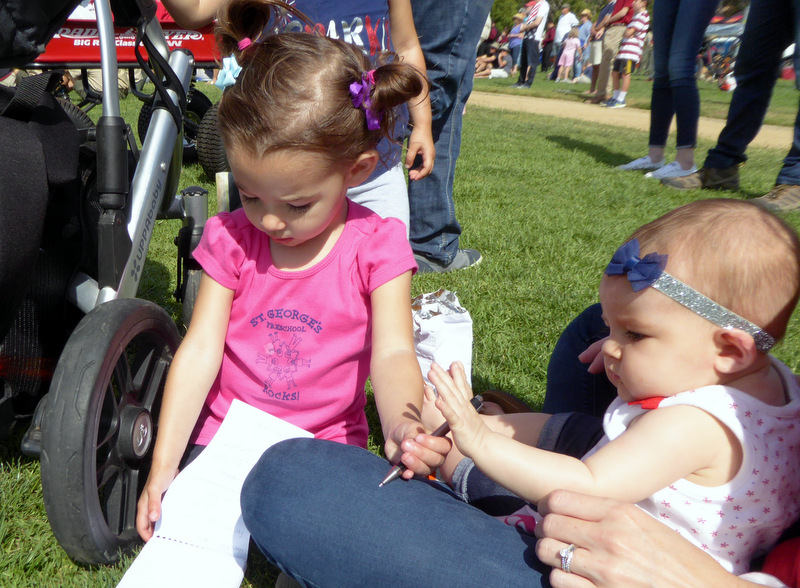
Of course, you can see my reporter notebook!
I’ve always loved words. I remember the first time I beat my mom at Scrabble. And I love to argue. I grew up in a small loud family, my folks both opinionated first generation Jewish immigrants in northern New Jersey. We argued for sport. Joey Paul (Class of ‘74) signed my Bloomfield High School yearbook: “Good luck in the future! Wanna argue about it?”
In northern California, I answered an ad for an “activist” because it was closer to the beginning of the alphabet than the writing or technical editing jobs I would have been seeking, and I took a job knocking on doors and asking people for money. I canvassed for the Citizens Action League in Oakland and San Francisco in 1979, maybe into 1980, until I was fired for organizing a staff union. I took my unemployment insurance pittance and volunteered with the Farmworkers Union in Hayward until we started collecting signatures to qualify Barry Commoner and the Citizens Party for the 1980 presidential ballot.
SEIU hired me as a union organizer in 1985 and the writing I did for the next 30 years was argument and advocacy. I honed my persuasive skills writing nasty letters to management, position papers, bargaining demands, grievances, petitions, leaflets, argument, briefs (which are not). The best union communicators I worked with helped workers win because they were able to capture the authentic voice of the workers.
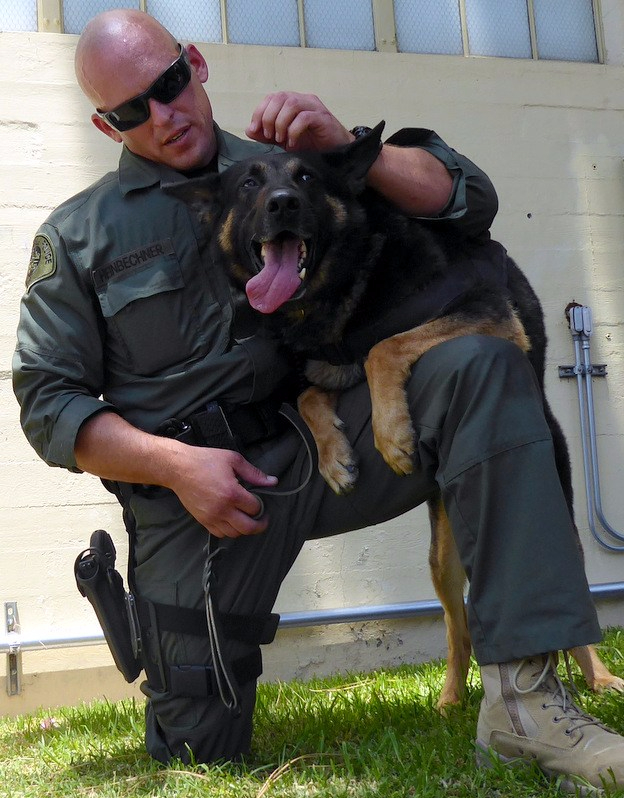
K-9 Officer Heinbechner with police dog, Idol
I am a lucky girl, vocation and avocation so neatly synced. My cousin Eileen teases me about it. “Who better to hire as a union organizer than the girl from New Jersey with a bad attitude and trouble dealing with authority?”
Reporting is harder. Every decision – who to talk to, what’s in, what’s not, what to ask — all represent a slant, an opinion, a bias – overt or subconscious; it is impossible to be a neutral observer. It hurts my head to try.
“With the possible exception of things like box scores, race results, and stock market tabulations, there is no such thing as Objective Journalism. The phrase itself is a pompous contradiction in terms.”
~ Hunter S. Thompson
I’m a writer, and Ken Draper over at City Watch LA has indulged my penchant for periodic opinion pieces for a long, long time. Graciously, he even let me write from Riverside and since we moved back, he encourages me to write more often. The husband of the publisher of the Crescenta Valley Weekly read something I wrote in City Watch and noted that I’d moved to La Crescenta. When Robin reached out to ask if I wanted to try local reporting, I was so unsure about it — (Am I taking the job of a young person just starting out? Am I comfortable just penning my sporadic position pieces as I want? Could I truly honor the profession learning it new, now?) — that I reached out to reporters I respect. One curmudgeon who I adore assured me that, by itself, my proper usage of the tilde in La Cañada portended future journalistic success.
Yes, it’s part-time freelance work (it is a weekly!) and the pay is (quite) low, but it’s a respected, quality, little local newspaper and I’m one to generally try to do a good job. Kindly, another newspaper friend taught me “lede” and “graf” and directed me to the Poynter organization for training (some free) and great info; another shared practical tips for “photojournalists.”
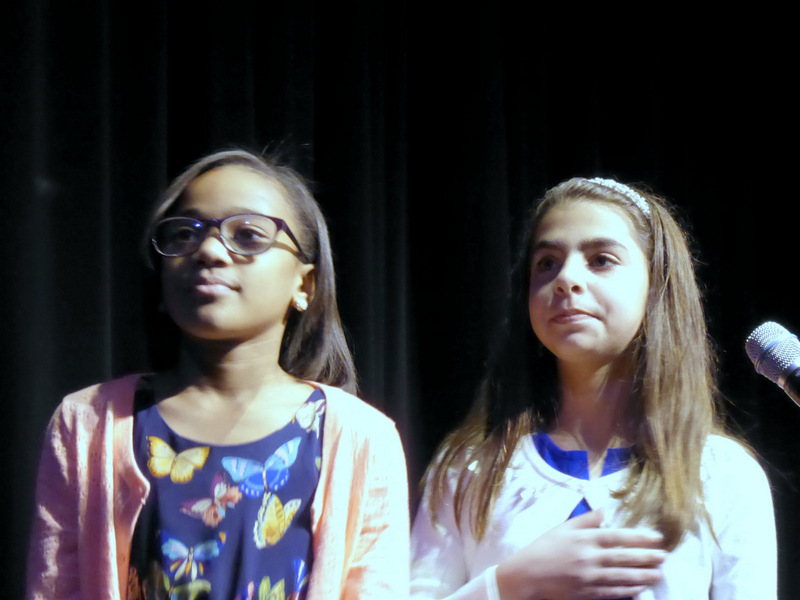
Skye Correy and Anahit Sinanyan, daughters of Portantino staff, leading pledge of allegiance at swearing in celebration
My first article ran in late December, on the front page, above the fold, color photo credit included. It’s a joyous neighborhood Christmas story and a perfect first assignment. My favorite line was edited out (get used to that!): Patti was telling me about her late husband; she said, “he never met a stranger.” (I’ve got one of those, too.)
Seeing my byline will never get old.
“Tricks you need to transform something which appears fantastic, unbelievable into something plausible, credible, those I learned from journalism. The key is to tell it straight. It is done by reporters and by country folk.”
~ Gabriel García Márquez
What have I learned so far?
- Advocacy writing is argument, straightforward, point-by-point, improved by passion. Reporting is hard work. It calls for facts and information to be rendered interesting and approachable, requires deep listening, detailed research, and the asking of lots and lots of questions. I’m curious, especially about people, and that helps. And I’ve always loved watching the workings of local government even if it means understanding land use and community water policy.
-
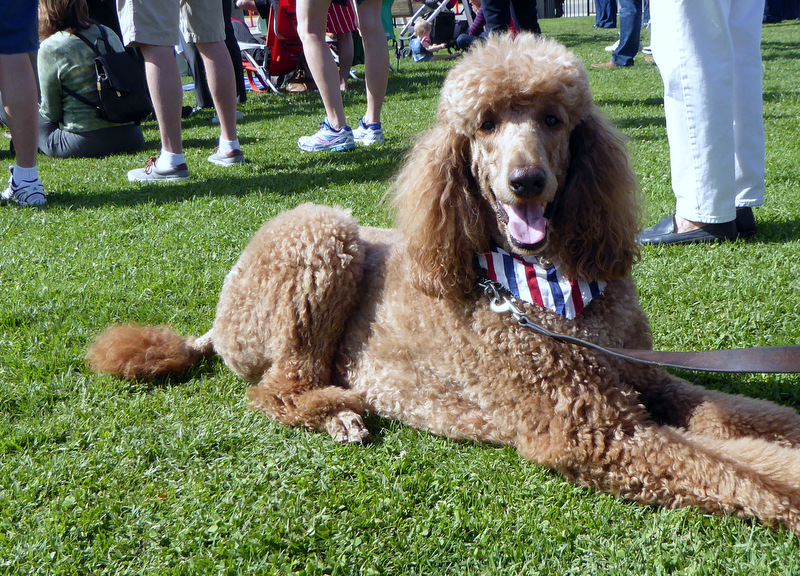
Milo, enjoying Memorial Day
Everyone knows about the Five W’s (who, what, where, when, why). Around the time I wrote this overview of Ramadan (with a little help from my friends), I added an F to those Five W’s. Food. What were they eating?
- Join the Union! Joe & Mindy got me organized into CWA Local 39521 and the ID I have from the freelance reporters’ union is the only ID I have. I hang it around my neck to look official.
- People are helpful and wonderful. They’ll answer questions patiently. I love how people start talking the second I pull out my reporter notebook. I didn’t expect that. Folks take “press calls,” and public workers actively work to be helpful and responsive and will try to get you pretty much whatever you need. [I left the celebration of the 75th anniversary of Glendale City Hall without having taken a picture of kids on the climbing wall. How do you miss the climbing wall? you might ask. The City’s PIO couldn’t find an official photo so he sent me one with his own kids on the climbing wall.]
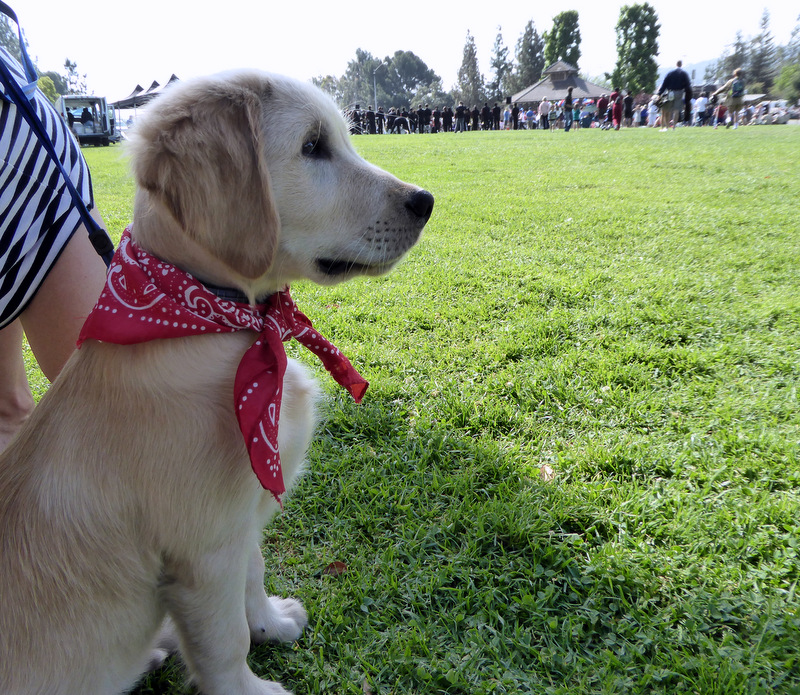
On Memorial Day 2017, La Crescenta resident (with her pup Maui) Susan Ballard said, It’s great to live in a town that takes the time to remember those who have served. We take our freedom for granted.
- Editors rock!
- Reporters DO NOT write the headline. Reporters also do not select photos or their placement.
- Check the sign that says the capacity of the room for help in determining crowd size.
- Figure out parking in advance if possible.
- Squatting is a critical tool in the journalist toolbox. Yes, squatting. I get the best quotes at eye level. That means squatting to talk to a person sitting down. Also, I find myself squatting to catch the best pictures. Squatting! Who knew? (Makes me even more grateful for yoga!)
- I made the mistake of reading Kelly Corrigan’s reporting on a story I was also writing before I wrote my story and, inadvertently I lifted a descriptive phrase from her. I felt horrible and apologized all over myself when I met her at the Rosemont MS Armenian Genocide commemoration. Since then I won’t read anyone else’s writing before I draft my own.
First assignment email! Do you need for us to send a photographer? she asked. Hell no! I was almost more excited to take pictures than to write! But I am an amateur with much to learn.
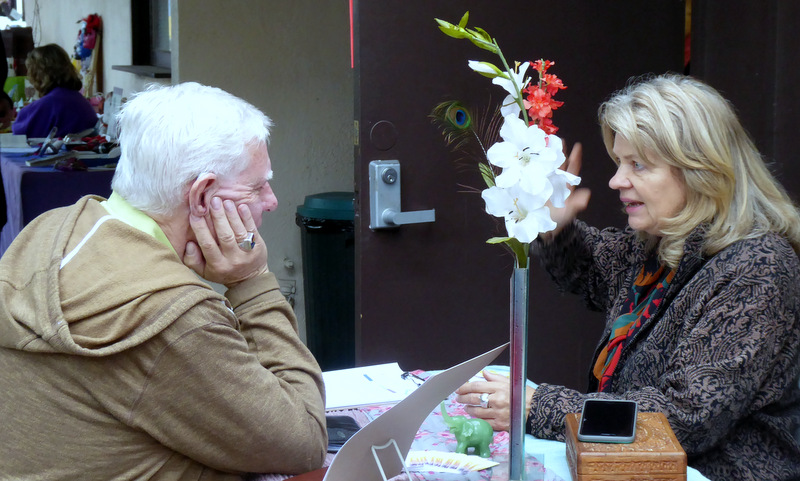
Metaphysical & Artisan Faire at La Crescenta’s Center for Spiritual Living
So far, here’s what I’ve learned about picture-taking:
- They tease me that if it’s a picture of a child or a dog, it’s probably mine. I don’t know if that’s a lesson, but dogs. And kids.
- Same as any other picture-taking, take tons of them. Some may turn out usable.
- Squat!
- Remember Star Trek’s Prime Directive. Do nothing to change the outcome! Alternatingly, avoid violating Heisenberg’s Uncertainty Principle. The act of observation can affect the observed. Watch out for it!
As I noted I’m not a professional photographer, and that’s during the day. First evening event, I show up and immediately think (like an organizer), who can I get to turn on the lights? But no. That would be wrong. It was a night-time event, meant to be portrayed in dim auditorium drear. Remember the Prime Directive. Instead, I followed the LA Times photographer around all night and got some acceptable shots of kids singing.

Students from RD White Elementary singing at commemoration of Armenian Genocide, April 2017
- Women! Aim a journalistic camera at a man and watch him — do nothing. Some men smile. Some stand up a little straighter. Women, on the other hand, almost universally comment on their appearance. No man has ever said, “But I look horrible. I’m not wearing any make-up!” to me. Never. None. Ninguna.
I have a (sincere) stock reply handy. I tell them that if they don’t look beautiful in the picture, I won’t send it in. So far, I’ve kept my word.
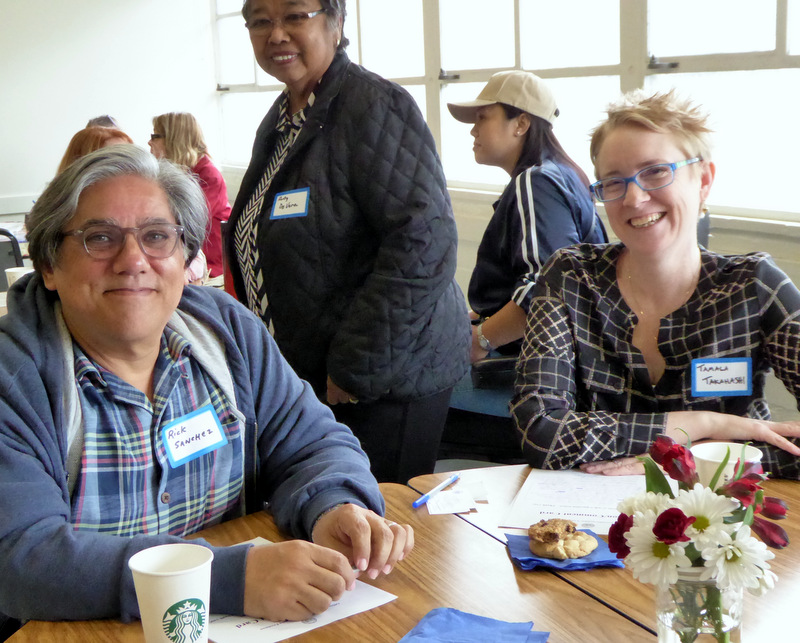
Beautiful, yes?
LEDE: the opening sentence or paragraph of a news article, summarizing the most important aspects of the story
GRAF: “In journalism, a nut graf puts the story in context and tells readers why the story matters. Many editors would say the nut graf is the most important section of a story because it tells the readers why they should continue reading the full story.”
“I became a journalist to come as close as possible to the heart of the world.”
~ Henry Luce
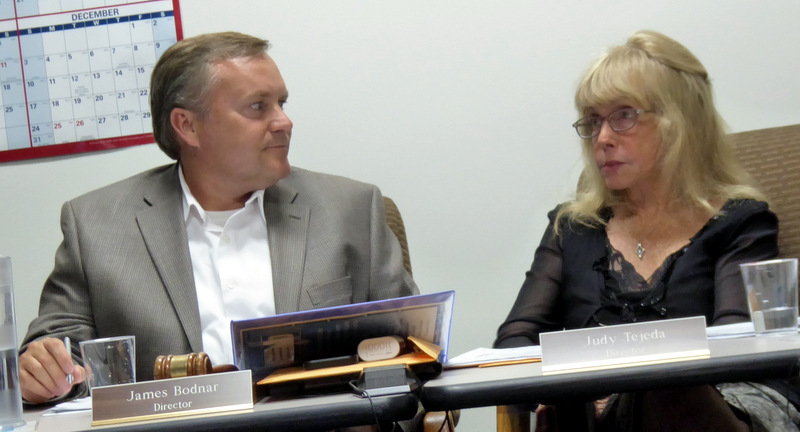
Late in the CVWD rate increase debate
Ten Practical Principles for Photojournalists:
Photojournalism is about people doing things
(Thanks to Professor Ross Collins, North Dakota State University, copyright 2012)
1. Get in close.
Your photos will often be published on low-quality newsprint for a jaded audience easily distracted. Detail gets lost. Photos strong enough to break through the media competition focus on a single, frame-filling center of interest. Generally no more than two or three people. No more than a few objects.
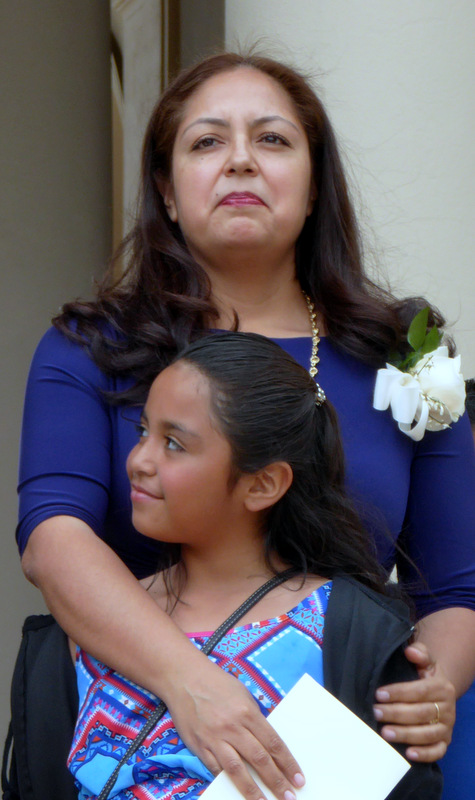
Alma Hernández, honored as one of State Senator Anthony Portantino’s Women of the Year 2017
A clean, contrasting background. Sometimes photojournalists call this the “poster effect.” This is why telephoto or zoom lenses are the workhorses of photojournalism: many photojournalists don’t even use a normal perspective (35-50mm) lens. If you can’t get in close, crop ruthlessly.
“If your pictures aren’t good enough, you’re not close enough.” ~ Robert Capa, one of the century’s top war photographers (killed by land mine while trying to get in close).
2. Find unusual angles.
If you’re sitting or standing like everyone else, you’re probably going to take back some blah photos. Kneel. Climb on a chair. Crouch. Lie down. Shoot down a stairway. Get off your butt. Good photojournalists are always moving.
Corollary to this rule: If forced to take photos of, say, a speaker at a podium (not an attractive option, but too often necessary), never sit in the chairs with the rest of the audience. Think you’ll be too noticeable? Everyone already knows you’re taking pictures — so what? If you’re too shy to move around in front of an audience, become a copy editor.
3. Get identification.
All subjects easily identifiable must be named. Journalism is about people, not abstract art. Most editors will reject photos without idents, unless they are used as generic illustrations. Beginners are intimidated by walking up to strangers, but it’s not really very hard. Simply say some variation of, “Hi, my name is Irving Nern, with the Spectrum. I just took your picture, and I wonder if I can have your name? Can you spell that, please?” Write names in your Reporters’ Notebook. Few people will turn you down: Americans love to be in pictures.
4. Burn pixels.
Move in, move out, move high, move low, and keep on clicking. You’ll have more to choose from, and you’ll more likely have a strong image. Unlike studio photographers, photojournalists have to nab action as it’s unfolding, so at least to some extent are forced to trust on luck to bring back good pictures. The old film rule used to be to shoot one roll (24 ex.) minimum at any event you’re asked to cover, even a speaker at a podium. You can interpret this in the digital age. Half a football game should bag you 75 photos at least. How are you going to have any choice at all if you return to the office with a mere four shots? Pixels are free!
One caution: Anything worth doing is not necessarily anything worth overdoing. Don’t just leave your camera in burst mode thinking you’ll edit those 1,580 images later. It’s a nightmare. I read a few years ago about a guy who took more than 2,000 images of a thunderstorm. TWO THOUSAND pictures. It the old days, that would have cost you about $550 for the film alone. One useful constraint about those old film days: it did encourage you to think at least a tiny bit before snapping the shutter.
5. Go beyond the cliché.
How many photos have you seen showing people talking on a phone? Working at a computer? At a desk with books in the background? In a mugshot? Shaking hands (“grip n’ grin”)? Making a lay-up to a basketball hoop? For goodness’ sake, promise yourself NEVER to take a photo like this again! Assigned a mugshot of a faculty member? Ask the person to meet at the lab, engage her in her research for a photo. Supposed to shoot a basketball game? Dump the standard “armpit shot,” look for interesting floor action. Make your shot stand out from the ruck!
6. Avoid obvious posing.
Okay, sometimes you have to ask people to stand someplace or do something, but that still doesn’t mean they have to just grin into the camera. Try to make the scene appear natural as if the subject were involved in something and the photographer just happened to come by. Photojournalism aims to cover people doing things, not people posing. That’s for the studio photographers.
7. Add light, but don’t make it obvious.
Available light is ideal, but usually its quality is hardly that. Especially when you’re shooting color, you need to control the color balance of garish green fluorescent, or difficult combinations of artificial and natural light. In some cases, light comes from ugly angles (such as nearly every standard classroom or office) or is so weak you can’t even get close to stopping the action.
The normal approach is to carry a portable electronic flash, but NEVER to merely attach it to the hot shoe and blast away. That looks ‘way too artificial. Solution: bounce. Aim your electronic flash straight up. Tape a piece of white cardboard at an angle so the light bounces up and off the cardboard. Adjust for your available light exposure, perhaps underexposing a stop. The added flash will fill in the ugly shadows, but still maintain a feeling of natural light.
This is harder if your light is primarily fluorescent, as your bluish flash will clash with the greenish ambient light, but you should be able to adjust most color cast problems fairly easily in Photoshop. When all else fails, at least take your flash off your camera, hold it a few inches away, and shoot directly.
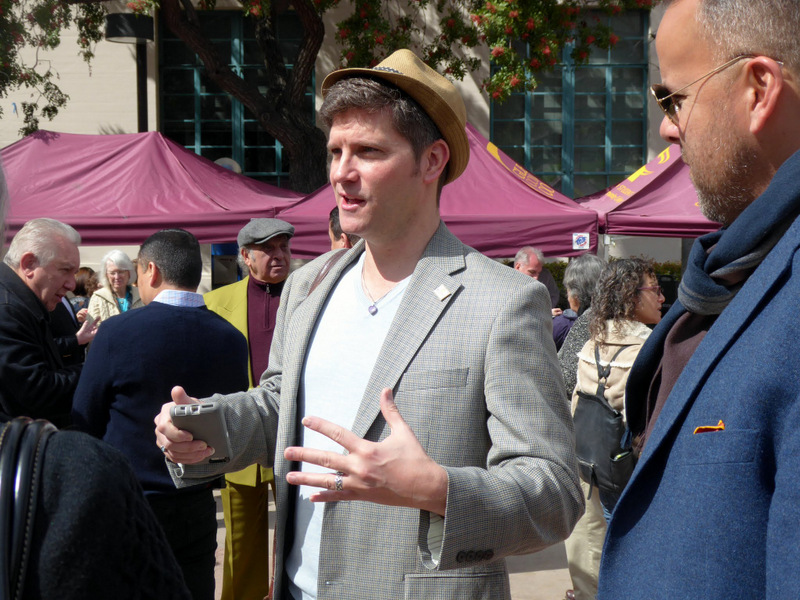
Hans Johnson, East Area Progressive Democrats
As an added note, good photojournalists carefully analyze the light falling on their subject, and find an angle which best enhances the scene. For instance, if a subject is bending over, the face may be in shadow. Wait until he stands. If a subject is seated next to a window, wait until she turns toward this attractive light source.
8. Focus faithfully, stay steady.
You just cannot use a blurry photo in a publication: any slight fuzziness will be enhanced by poor quality paper and fast reproduction. Most fuzzy photos can be blamed on camera movement. If you’re naturally jittery, get help: buy a mini tripod and lean it on your chest, or buy a monopod and lean it on the ground. In a pinch, lean against a tree or wall. Rule of thumb: any shutter speed more than one stop lower than the size of your lens will produce a fuzzy picture, unless you use a mechanical aid. This means If you’re shooting at about 50mm or equivalent, you can’t hand-hold anything slower than 1/30 second. If you’re shooting with a zoom set at 200 mm, 1/125 is the limit. And this really is the limit: you must make like a rock to get sharp images even at this speed. (The older you get the harder that gets, by the way. I used to hand-hold 1/15 second. Not anymore….) Photoshop’s blur filter can sharpen pixels, but can do only so much (or usually not so much) with pictures that were originally blurry.
Image stabilization in some modern lenses may help steady your camera for slower exposures. But don’t forget to pay attention to your auto focus. Is it actually focusing on the center of interest? I have found autofocus to give me the wrong setting at least a quarter of the time, and it hardly works at all in low light.
Conclusion: automatic cameras are wonderful devices, but you need to be aware of your settings, shutter speed, f/stop and focus.
9. Dump poorly exposed photos.
Got a great shot, but the guy’s face is in deep shadow? Got a great expression on that cute kid, but a telephone pole is growing out of her head? What about that nice little blurry photo of the sorority sisters’ car wash? DO NOT submit poorly exposed photos for publication, no matter how much you like the image. On the other hand, BE CAREFUL to expose correctly. Automatic cameras are usually smarter than we are, but not always. Study principles of proper exposure. It’s still hard to fix up poorly exposed images, even with Photoshop software: you can’t add detail when nothing’s there to begin with.
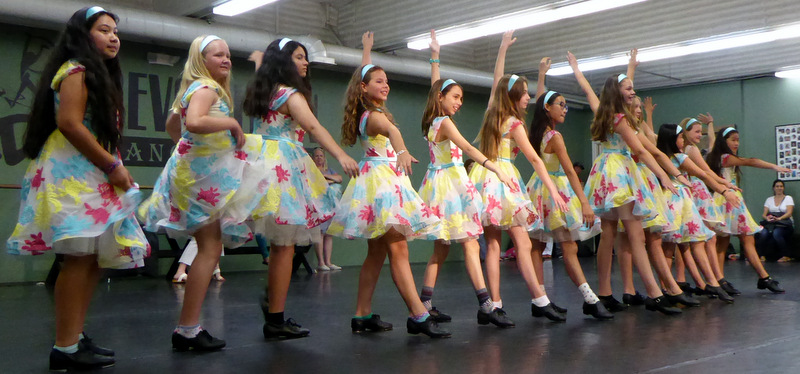
Dance students at Montrose’s Revolution Dance Studio
10. Have guts.
Walk up to 10 people on the street, snap their picture, ask for their name, write it down. Get a floor pass to a rock concert (and wear earplugs!) Walk as close to the sports action as you dare — get a press pass if you need one. Look for interesting expressions after the posed shots are done. Get out there and shoot! Photojournalists are to a person not to be counted among the timid. Sure, you can overdo this — harassing paparazzi spring to mind — but a courteous, assertive demeanor is nothing to be ashamed of.
“Being a reporter is as much a diagnosis as a job description.”
~Anna Quindlen
Useful info and resources:
Pacific Media Workers Guild – The Newspaper Guild – CWA Local 39521
Resources for Investigative Journalists
International Center for Journalists
Society of Professional Journalists
Committee to Protect Journalists
Investigative Reporters & Editors Resource Center
Pulitzer-Winning Photographer David Turnley’s Advice to a Class of Photojournalism Students
National Press Photographers Association’s (NPPA) Code of Ethics
7 Golden Photojournalism Rules by a Reuters Chief Photographer
 LA!
LA!